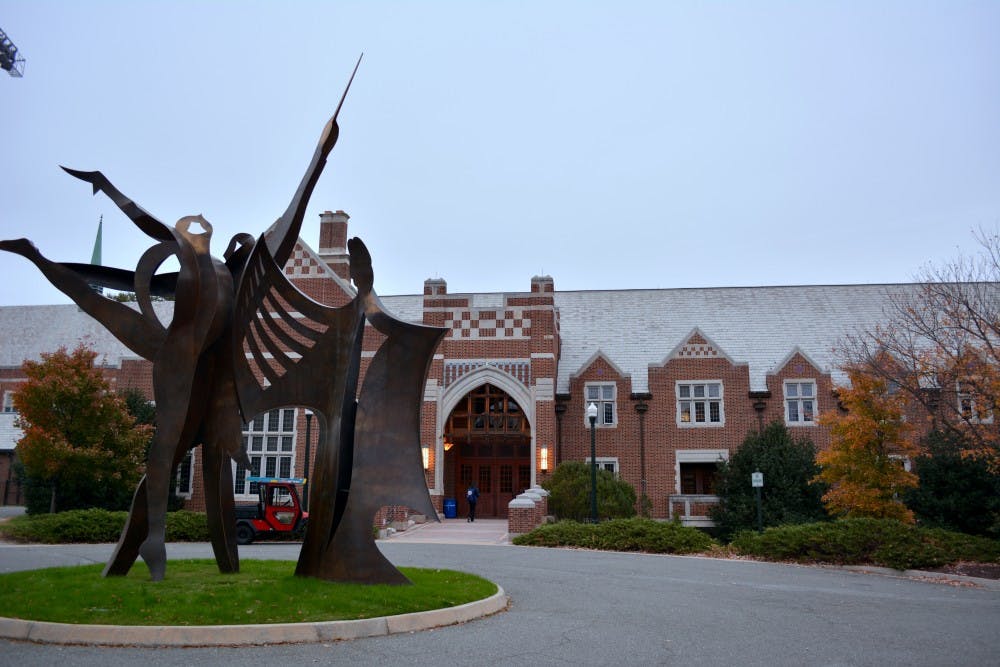Two years of intense studies culminated for University of Richmond theater students from Feb. 8-11 in their production of "Vinegar Tom," a period piece that addresses gender and power struggles.
Students in the Production Studies III class spent the entirety of their previous semester selecting a piece, analyzing relevant material, designing the set and eventually directing and producing the play.
“Vinegar Tom," written by Caryl Churchill in 1976, explores notions of the female identity, sex and power struggles through the context of 17th-century witch trials. The period piece provides theatrical juxtaposition as actors performed songs in a contemporary way.
The play was the perfect response piece in light of sexual assault and harassment accusations against Harvey Weinstein and other powerful men, Megan Wirtz, the play's lighting designer, said.
The students' decision to produce Vinegar Tom also aligned with this year’s Tucker-Boatwright Festival theme of "The Personal is Political, the Political is Personal," as decided by the Department of Theatre and Dance. The Tucker-Boatwright Festival highlights artists and scholars whose work explores the subjects of identity, citizenship and the challenges of personal and collective action, according to the School of Arts and Sciences.
After the play, the cast and crew held an open discussion, and members of the audience were encouraged to stay and ask questions.
First-year Emilie Marie Breaux, who portrayed Ellen, commented on what it was like to put on the play in today’s social climate.
“In this play, we’re calling out the sexist undercurrent,” Breaux said. “It’s so nice that this was written for women to have a voice."
Senior Duncan Trawick played Jack, the play’s antagonist and one of the two male actors in the production.
“It was pretty clear early in the process that this play was not meant to be our megaphone,” Trawick said. “Being in a production like this allowed for quite a bit of self-reflection and discomfort at times, but it was productive.”
The set design served as a nod to the team’s theme of violence against women, scenic designer Emilie Knudsen said. Over 4,000 images of women’s faces covered the play’s set, representing 24 women from the 1970s and 1980s who went missing and were never found.
“We wanted to put them everywhere so they would be inescapable and that the audience and actors had to walk on them and inflict violence because that was central to our theme for the show,” Knudsen said.
Enjoy what you're reading?
Signup for our newsletter
The team decided every detail of the play, including the wardrobe, music and set design, with the overarching theme in mind. The team also designed the round layout of the stage as a way to not only disrupt the setup of the theater but also implicate the audience in the action that occurred on stage, Knudsen said.
For the actors, this production provided more than just the culmination of their semester of work. It was a way to express their attitudes and opinions about larger issues in the world and on UR's campus, senior Claire Gates, said.
“We get to tell the stories of women who were killed because they were women, and sing their songs and be right in your goddamn faces about it,” Gates said.
Contact contributor Jessica Dugan at jessica.dugan@richmond.edu.
Support independent student media
You can make a tax-deductible donation by clicking the button below, which takes you to our secure PayPal account. The page is set up to receive contributions in whatever amount you designate. We look forward to using the money we raise to further our mission of providing honest and accurate information to students, faculty, staff, alumni and others in the general public.
Donate Now



